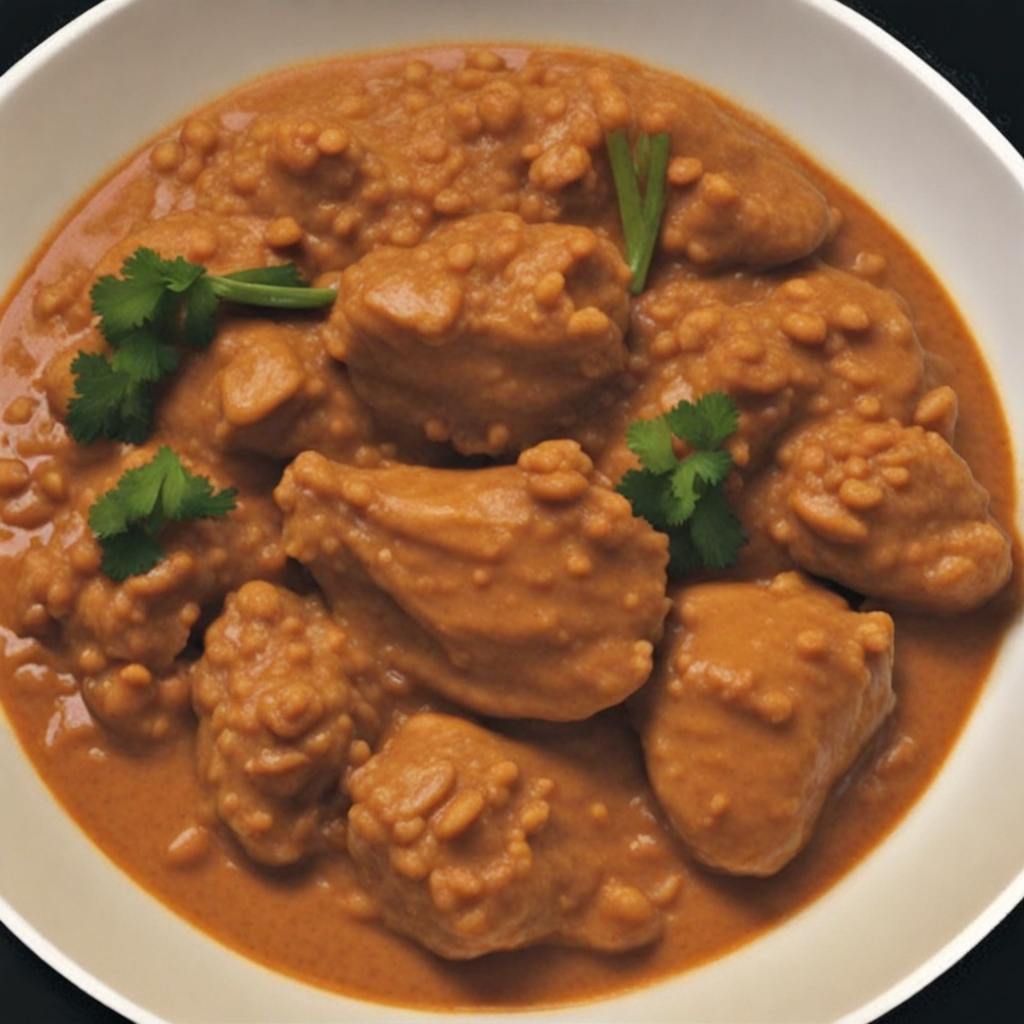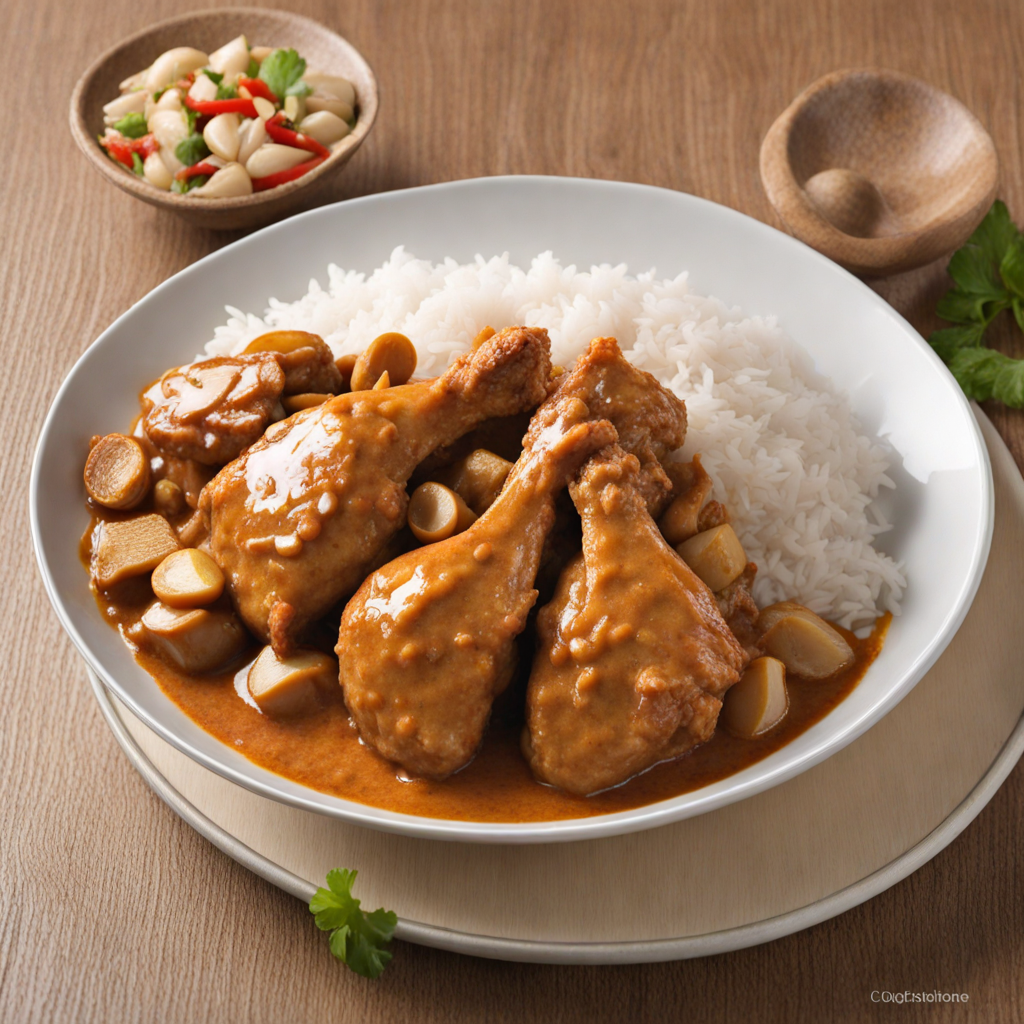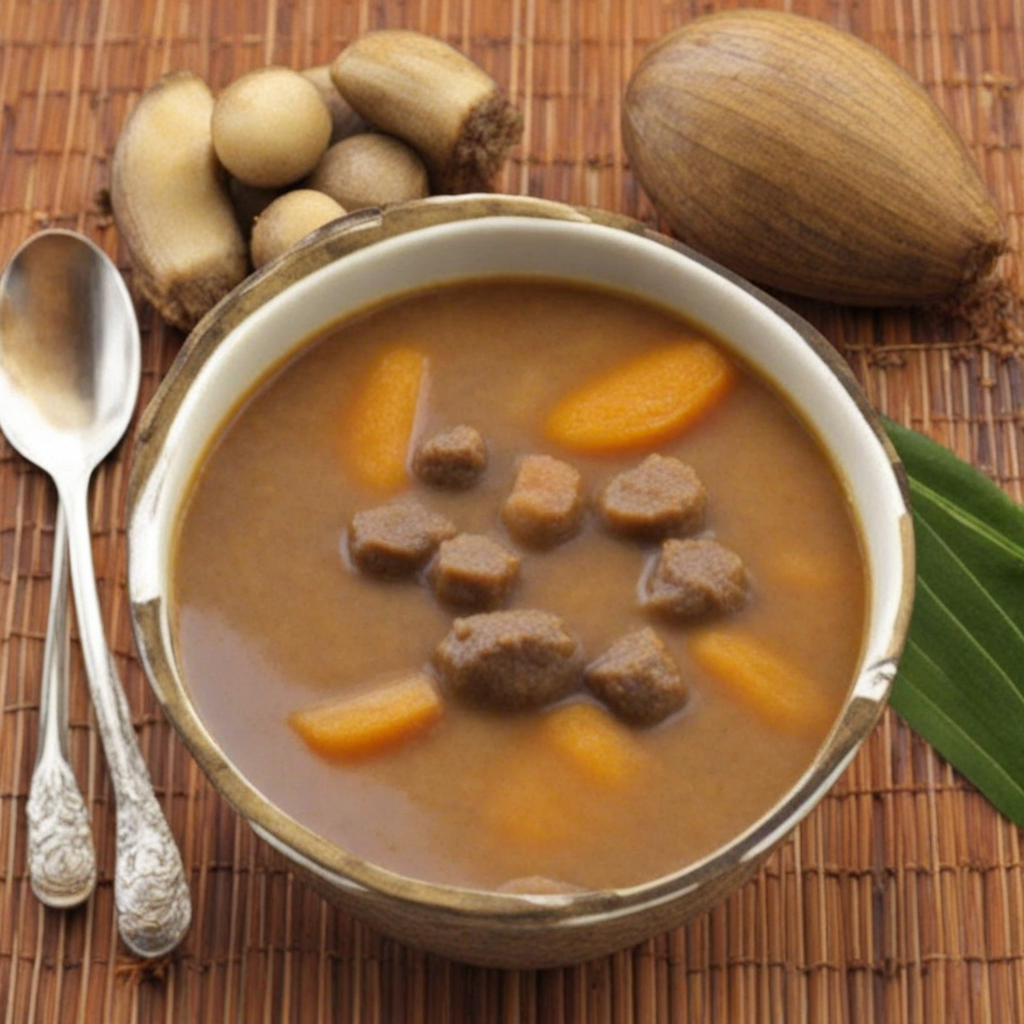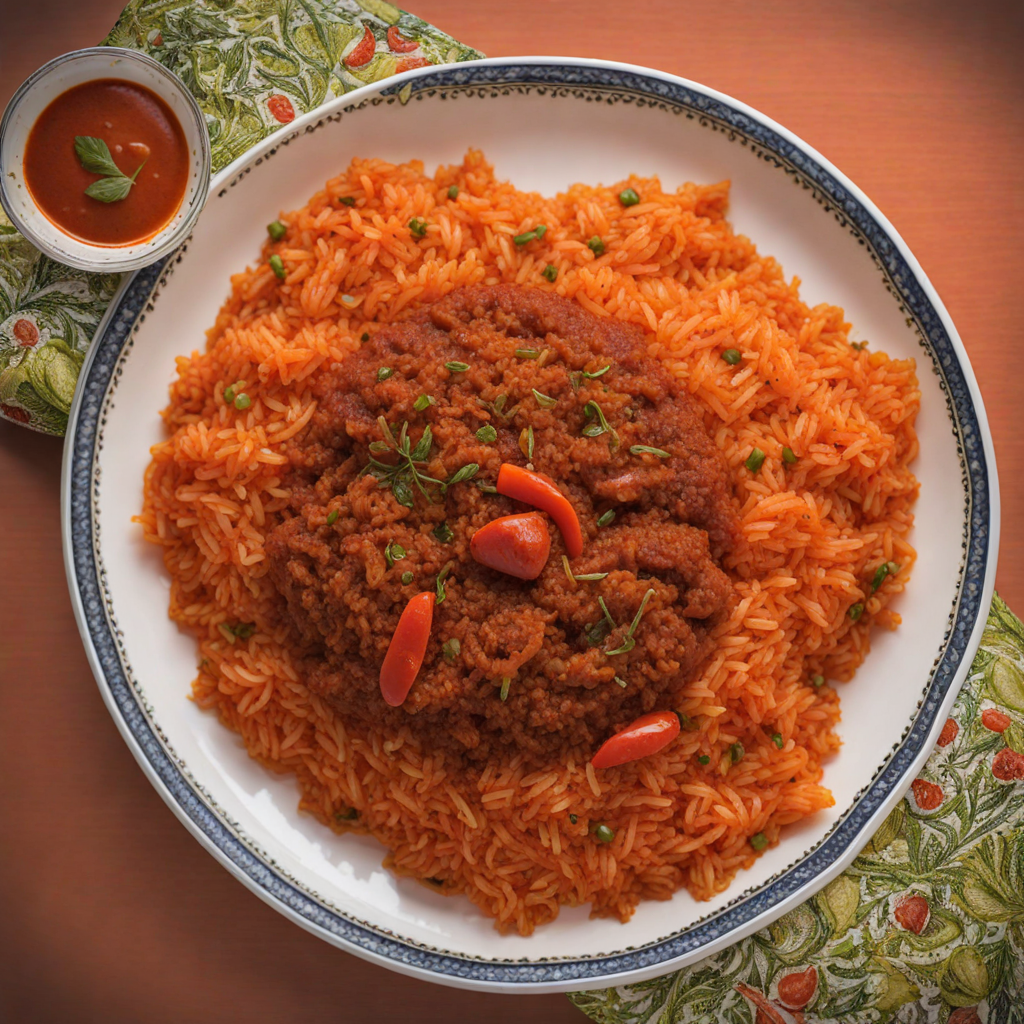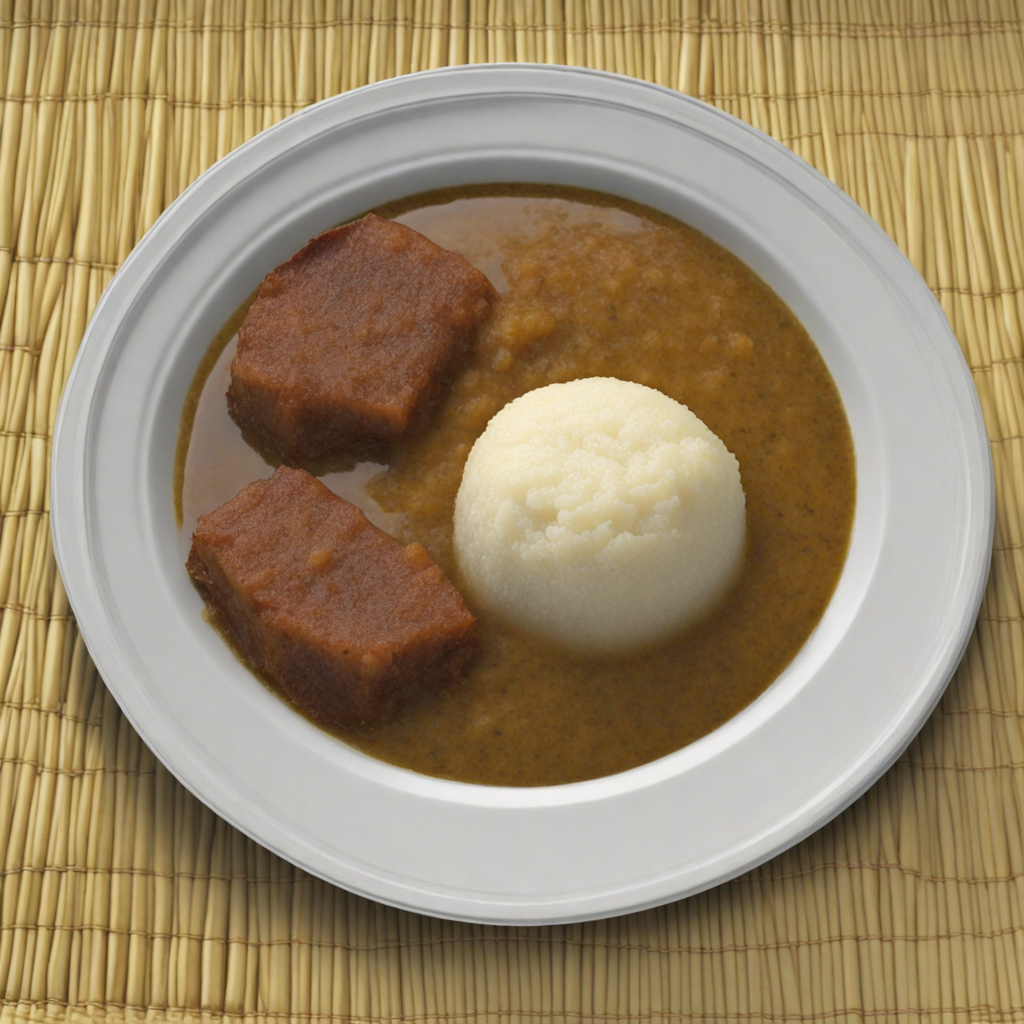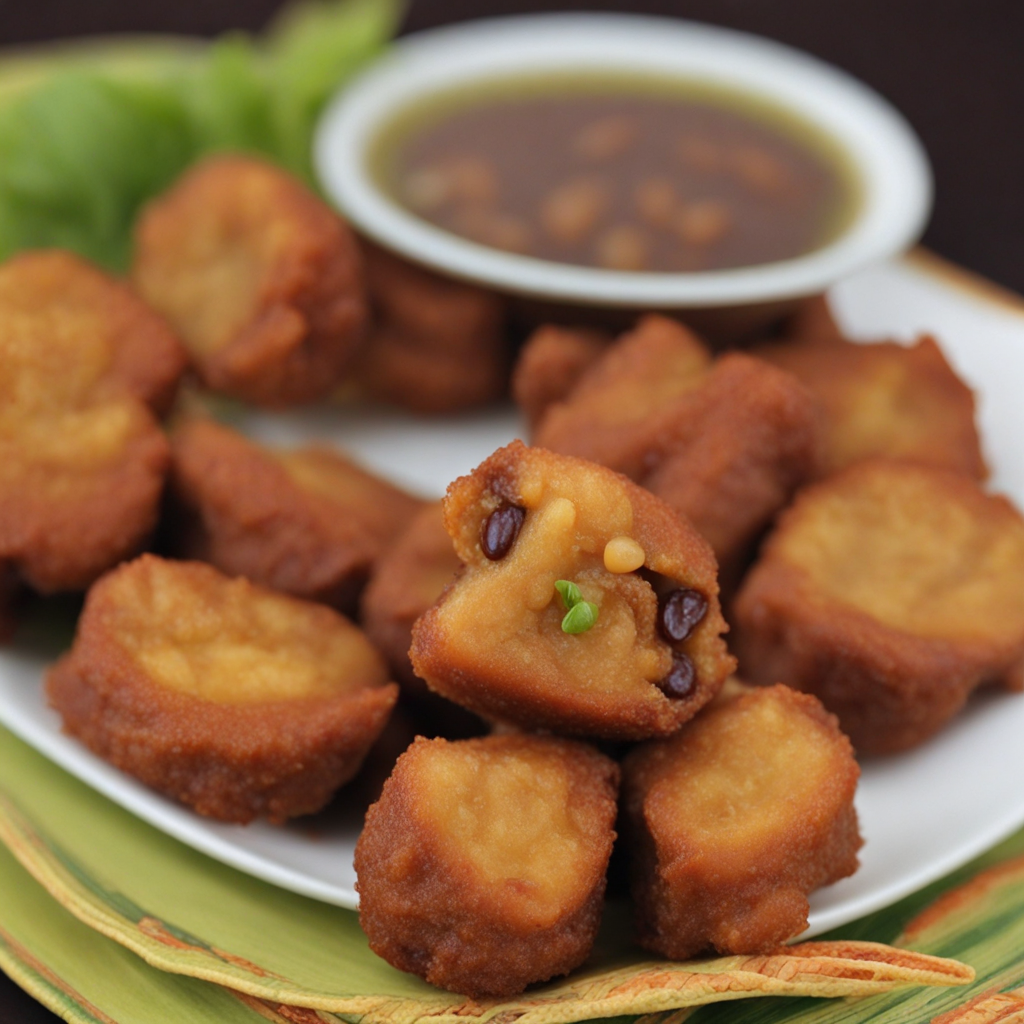Chicken in Peanut Sauce
Chicken in Peanut Sauce is a delightful dish that embodies the rich culinary traditions of Equatorial Guinea, offering a unique combination of flavors that tantalize the palate. The tender chicken is typically marinated with a blend of spices, allowing it to soak up the aromatic notes before being cooked to perfection. The star of the dish is its luscious peanut sauce, made from ground peanuts that are simmered with tomatoes, onions, and a variety of spices. The result is a creamy, nutty sauce that envelops the chicken, creating a dish that is both hearty and comforting. This dish is often served alongside staple ingredients such as rice, yams, or plantains, which complement the rich flavors of the peanut sauce. The combination of textures—tender chicken, velvety sauce, and the slight crunch of peanuts—creates a satisfying experience for the senses. The addition of vegetables, such as bell peppers or carrots, can enhance the dish, adding color and a fresh contrast to the creamy peanut base. Chicken in Peanut Sauce is not just about taste; it is a dish that brings people together, often enjoyed during family gatherings and celebrations. Its origins can be traced back to the local ingredients and cooking methods that reflect the vibrant culture of Equatorial Guinea. Each bite tells a story of heritage and tradition, inviting food lovers to explore the depths of West African cuisine. This dish promises a culinary adventure that is both exotic and familiar, making it a must-try for anyone seeking new and exciting flavors.
How It Became This Dish
The Rich Tapestry of Pollo en Salsa de Cacahuete in Equatorial Guinea Introduction Pollo en salsa de cacahuete, or chicken in peanut sauce, is a beloved dish that encapsulates the culinary heritage of Equatorial Guinea, a small yet culturally rich nation located on the west coast of Central Africa. The dish's unique flavor profile and comforting essence make it a staple in many households, while its history reflects the complex interplay of indigenous practices and colonial influences that have shaped the nation’s cuisine. Origins and Influences The roots of Pollo en salsa de cacahuete can be traced back to the indigenous peoples of Equatorial Guinea, particularly the Fang and Bubi ethnic groups. These communities developed their culinary traditions based on the ingredients readily available to them in their lush environments. The fertile soil and tropical climate of the region allowed for a diverse range of agricultural produce, including maize, yams, cassava, and various fruits and vegetables. The use of poultry, particularly chicken, as a source of protein has been common across many African cultures for centuries. The introduction of peanuts to the region is attributed to the transatlantic trade routes established during the colonial period. Originally from South America, peanuts were brought to Africa by Portuguese traders in the 16th century. They quickly became integrated into local diets due to their adaptability to the African climate and their nutritional value. Peanuts not only provided an excellent source of protein but also contributed a rich, creamy texture and nutty flavor to dishes, which would eventually lead to the creation of Pollo en salsa de cacahuete. As Equatorial Guinea became a Spanish colony in the late 19th century, Spanish culinary practices began to influence local cuisine. The melding of indigenous ingredients with European cooking techniques created a distinctive culinary landscape that included the use of spices, herbs, and methods that would enhance traditional dishes. The combination of chicken, peanuts, and local spices in a sauce reflects this rich tapestry of influences. Cultural Significance Pollo en salsa de cacahuete is more than just a dish; it is a symbol of cultural identity and communal spirit in Equatorial Guinea. The preparation of the dish often brings families together, particularly during special occasions, celebrations, and gatherings. It is common to see families sharing a large bowl of chicken in peanut sauce, accompanied by rice or plantains. This communal aspect of dining fosters social bonds and reinforces the importance of family ties within Equatorial Guinean culture. In many households, recipes for Pollo en salsa de cacahuete are passed down through generations, often with each family adding their unique twist to the dish. These variations can include different spices, cooking methods, and side dishes, which reflect regional preferences and personal tastes. The act of preparing and sharing this dish serves as a way to connect with one’s heritage and maintain cultural traditions amidst the rapid globalization that has begun to permeate African societies. Development Over Time As Equatorial Guinea gained independence from Spain in 1968, the nation experienced significant political and economic changes. The culinary landscape was influenced by these shifts, as chefs and home cooks began to explore and celebrate their culinary heritage with renewed vigor. Pollo en salsa de cacahuete remained a staple, evolving in its presentation and preparation to reflect modern tastes while staying true to its origins. In urban areas, particularly the capital city of Malabo, the dish has been embraced by a younger generation that is increasingly exposed to international cuisines. Restaurants have emerged that offer reinterpretations of traditional dishes, including Pollo en salsa de cacahuete, often served with a contemporary flair. Chefs might incorporate global culinary techniques or fusion elements, such as adding coconut milk for creaminess or experimenting with different types of protein. Despite these modern adaptations, the essence of Pollo en salsa de cacahuete remains intact. The dish still relies heavily on the same core ingredients, and the traditional preparation methods are often preserved to maintain authenticity. This balance between tradition and innovation is indicative of the broader culinary evolution in Equatorial Guinea, where there exists a strong desire to honor culinary heritage while also embracing contemporary influences. Global Recognition In recent years, there has been a growing interest in African cuisines globally, with chefs and food enthusiasts seeking to explore the diverse flavors and cooking techniques from the continent. This trend has led to a renewed appreciation for dishes like Pollo en salsa de cacahuete, which have begun to appear on menus outside of Equatorial Guinea. Food festivals and culinary events celebrating African cuisine have helped to raise awareness of this dish and its cultural significance, bringing it to a wider audience. The rise of social media has also played a crucial role in this global recognition. Home cooks and chefs alike have taken to platforms like Instagram and YouTube to share their recipes and cooking techniques, allowing the world to witness the beauty of Pollo en salsa de cacahuete and other traditional dishes. This visibility has not only helped to preserve the dish’s legacy but has also inspired culinary exchanges that celebrate the rich diversity of African food. Conclusion Pollo en salsa de cacahuete is more than just a meal; it is a culinary narrative that reflects the historical, cultural, and social fabric of Equatorial Guinea. Its origins are rooted in indigenous practices, enriched by colonial influences, and celebrated in contemporary kitchens. As the world becomes more interconnected, the dish stands as a testament to the power of food in forging identity, fostering community, and bridging cultures. Whether enjoyed at a family gathering or presented with a modern twist in an upscale restaurant, Pollo en salsa de cacahuete is a delicious reminder of Equatorial Guinea’s vibrant culinary heritage and its ongoing evolution in a global context.
You may like
Discover local flavors from Equatorial Guinea


